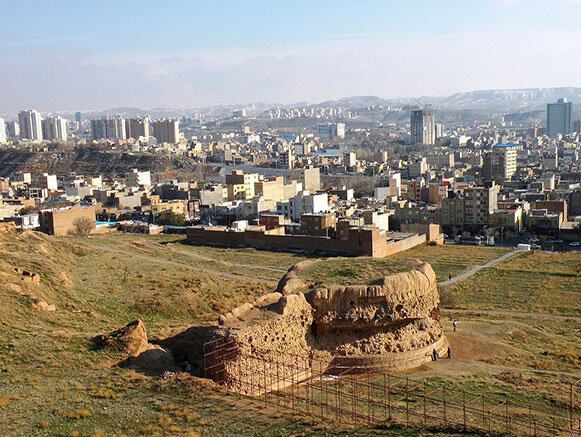Ruins of 13th academic complex getting ready to host visitors

TEHRAN–The ruins of Rab’-e Rashidi, which was a thriving academic complex in northwest Iran centuries ago, are getting ready to host visitors, researchers, and cultural heritage buffs.
A team of constructors is currently busy creating a special tourist route to the historical site, CHTN quoted East Azarbaijan province’s tourism chief as saying on Sunday.
Founded by Hulagu Khan, a grandson of Genghis Khan, Rab-e Rashidi served as an academic complex in the 13th century during the Ilkhanid era. Hulagu took with him many Chinese scholars and astronomers, who helped the famous Persian astronomer Nassereddin al-Tusi learn about the Chinese calculating tables.
During its long history, Rab-e Rashidi was damaged by natural disasters. Most of the structure is covered by six meters of soil and dust. Today it is an archeological site in Tabriz, East Azarbaijan's capital.
According to sources, thousands of students from Iran, China, Egypt and Syria studied their desired subjects here under the supervision of scientists, physicians, and Islamic scholars.
More than 30,000 houses, stores, and other urban constructions existed in the residential quarter. Also known as the Rashid Foundation or Estate, the main function of Rab-e Rashidi was that of a university city, and its main purpose was the study and documentation of Rashideddin’s writings.
Furthermore, the foundation maintained a library, a hospice, a hospital, a Khanqah (a building designed for holding Sufi gatherings), and a tomb with winter and summer mosques. The tomb was originally that of Rashideddin, built by his son Muhammed Ghiyath.
In addition to the components of the foundation, the estate also served as a residential quarter. It contained caravanserais, shops, baths, storehouses, mills, factories, and some 30,000 houses.
The entire complex was surrounded by a wall that Ghazan Khan had begun building to enclose the entire city of Tabriz, and later by a second one that enclosed its suburbs.
Rab-e Rashidi began to decline after the death of Rashideddin in 1318. Although Rashideddin’s son, Muhammed Ghiyath, attempted to expand the foundation after his father’s death, he too was put to death in 1336, and the foundation was again looted.
A local ruler by the name of Malek Ashraf later took over the site in 1351 and expanded it further by building fortifications, mosques, hospitals, and schools.
Today, the historical elements of the Rab-e Rashidi can no longer be identified. All that remains are masonry bases of the fortifications that were built either during the 14th century or by Shah Abbas in the 17th century.
The most prominent of the masonry bases still extant has a rectangular projection, which is believed to have been the foundation of an astrological observatory mentioned in Rashideddin’s writings. In addition, mosaic fragments that may date from Rashideddin’s time up until the Safavid period were also found at the site.
AM
